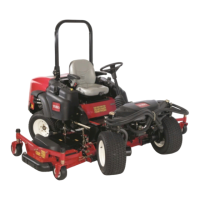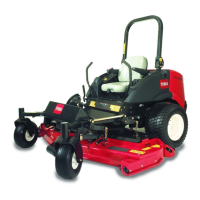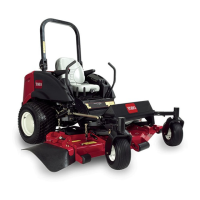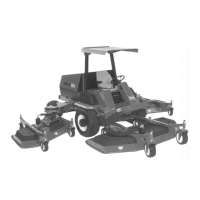" 0." !&"."( #0"( &. #())(" 0/&+*
)0./ " 0."! 2%"* ./+-&*$ +- %*!(&*$ &/ +
*+/ #&(( #0"( /*' 2%&(" "*$&*" &. -0**&*$ %+/ +-
2%"* ) %&*" &. &* * "* (+."! -" ,+-.
)4 0&(! 0, *! " &$*&/"! 4 .,-' +-
#()" .+0- " )*4 #""/ 24
2%&(" #&((&*$ /%" #0"( /*' /+ ,-"1"*/ /%" ,+..&5
&(&/4 +# * "3,(+.&+* (24. #&(( #0"( /*' +0/5
.&!" *! 2&," 0, *4 .,&(("! !&"."( #0"( "#+-"
./-/&*$ "*$&*" ." #0**"( +- .,+0/ /+ ,-"5
1"*/ .,&((&*$ !&"."( #0"( *! #&(( /*' /+ +0/
&* % )) "(+2 /%" #&(("- *" ' /+-" !&"."(
#0"( &* ("* .#"/45,,-+1"! +*/&*"- *!
'"", /%" , &* ,( " +* /%" +*/&*"- "",
!&"."( #0"( &* ++( 2"((51"*/&(/"! ,( " *"15
"- &* * "* (+."! -" .0 % . %+/ ./+-$"
.%"! + ..0-" 1+(/&(&/4 *! /+ ,-"1"*/ +*5
/)&*/&+* !+ *+/ 04 )+-" /%* )+*/%
.0,,(4
The engine runs on No. 2-D or 1-D automotive type
diesel fuel with a minimum cetane rating of 40.
+/" Higher cetane rated fuel may be required if
machine is to be used at high altitudes and
lowĆatmospheric temperatures.
Use No. 2ĆD diesel fuel at temperatures above 20F
(Ć7 C). and No. 1ĆD diesel fuel below 20F(Ć7 C). Use
of No. 1ĆD diesel fuel at lower temperatures provides
lower flash point and pour point characteristics,
therefore easing startability and lessening chances of
chemical separation of the fuel due to low
temperatures (wax appearance, which may plug
filters).
Use of No. 2ĆD diesel fuel above 20 F (Ć7 C) will
contribute toward longer life of the pump components.
Do not use furnace oil. Furnace oils usually contain
heavy cracked distillates which are not suitable for
diesel engines.
Store fuel outside of buildings in a convenient location.
Tipping the front of the tank up slightly will allow
contaminants to collect at the lower end away from the
outlet. Never empty the tank below 4 in. (10 cm) from
the bottom of the tank to avoid picking up water and
other contaminants that may have collected at the
bottom. Either filter the remainder at the bottom
through a chamois or dispose of it periodically to
prevent excessive buildĆup of contaminants.
Keep all fuel containers free of dirt, water, scale and
other contaminants. Many engine difficulties can be
traced to contaminants in the fuel.
Use only metal containers for fuel storage. DO NOT
store the fuel in a galvanized metal container. A
chemical reaction will result, which will plug the filters
and cause possible fuel system damage.
If possible, fill the fuel tank at the end of each day. This
will prevent possible buildup of condensation inside
the fuel tank, preventing possible engine damage.
Allow the engine to thoroughly cool down before
refueling.
Using a clean rag, clean area around fuel tank cap.
Remove cap from the fuel tank (Fig. 16) and fill the
8 gallon (34 l) tank to within 1 inch (25 mm) from the top
with diesel fuel. Install fuel tank cap tightly after filling
tank.
&$0-"
0"( /*' ,
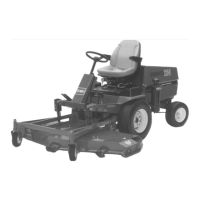
